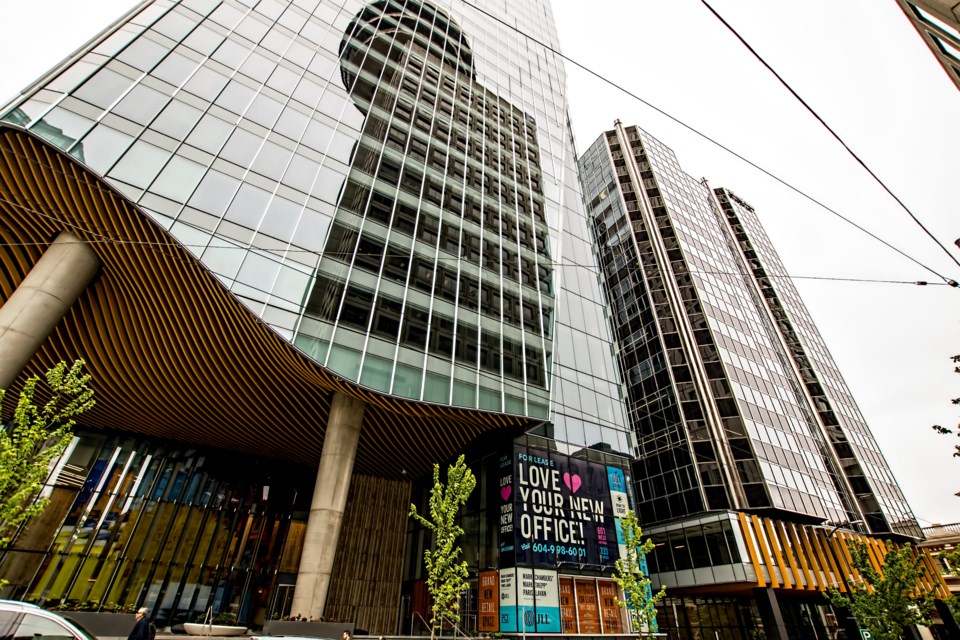One of the more interesting data points in the unfolding return-to-work phenomenon has been how well British Columbia has performed compared to other parts of Canada. According to Colliers Research, return to work levels for Vancouver overall remain above the country-wide average and have been so for the last two years. This data goes beyond return to office specifically, as it includes all types of work including retail, education, tourism and restaurants. But what is also striking to note is that return to work levels in downtown Vancouver are up 40 per cent from September 2020. And mid-August return to work levels were above mid-April levels, despite summer usually being slower.
We know some of the reasons why Vancouver has done so well: Vancouver benefits from a more favorable year round climate and a more robust outdoor economy and lifestyle than in other parts of Canada and so we were less affected by the impacts of COVID-19 than other major markets; Vancouver is also less dependent on transit than say Toronto and thus, we have a greater reliance on private transit which has encouraged more people to drive to work; Vancouver, and B.C. generally, had less depth and duration of restrictions. But despite all of this, the return to office experience is obviously different industry to industry and business to business.
What we saw at the start of the pandemic was that the early adopters of work from home policies were primarily anchored in the tech sector. They were also the ones to return to the office more quickly, with in many cases, additional staff, increased office footprints and overall square footage. However, most companies and organizations are still trying to figure out their hybrid and flexible workplace strategies, and that includes re-evaluating their long-term office needs. This predicament is not unique to the tech sector, and the realization, for some, is that they may never return to pre-Covid occupancy levels. This has led to an increased amount of office space being put onto the sub-lease market.
Vancouver’s office sector is facing several significant challenges. According to a recent poll conducted by Colliers among several major landlord clients to gauge how they were faring with their tenancies and return to office, what we found was surprisingly low occupancy rates.
Most major landlords in downtown Vancouver are reporting 25 per cent to 50 per cent occupancy levels in an office market with a relatively healthy vacancy rate when compared to other major office markets in North America. Many of the same landlords, who are national in scope with major office holdings in Toronto, are reporting much lower occupancy levels in their downtown office portfolios.
In addition, the amount of sub-lease space that’s been added to the downtown Vancouver office market in just the last few months is similar to what was witnessed at the early stages of the pandemic. The eventual outcome is the likely downward pressure on rental rates across many building classifications, coupled with more opportunities for those tenants used to evaluating fewer availabilities in a much more competitive leasing environment.
While buildings are seldom ever 100 per cent occupied, these new lower occupancy levels represent a trend that are now having a ripple effect on other sectors, including transportation, retail and the hospitality sectors. Those sectors have and will continue to struggle with reduced pedestrian presence, which has in turn impacted the safety and security of the downtown core.
Even though Vancouver office space continues to retain and attract tenants, there are signs of headwinds to come in certain building classifications, such as Class B and C office space, including non-view space or poorly improved space, which has become much harder to lease and with elevated levels of competition. An increase in downtown sub-leases means more leased space is being placed onto the market, now accounting for more than a quarter of the vacant office space in the core.
However, unlike other major markets including Toronto, New York and San Francisco, Vancouver has proven in past down cycles – like the financial crisis of 2008-09 – to be resilient. With increased immigration, a strong talent pool and our low dollar, Vancouver continues to attract more than its share of larger firms. In addition, even while companies look to retain and expand flexible workplace strategies, they continue to need space for collaboration and connection among employees, paving the way for ongoing demand.
- Darrell Hurst is the senior managing director for Colliers, Vancouver.



